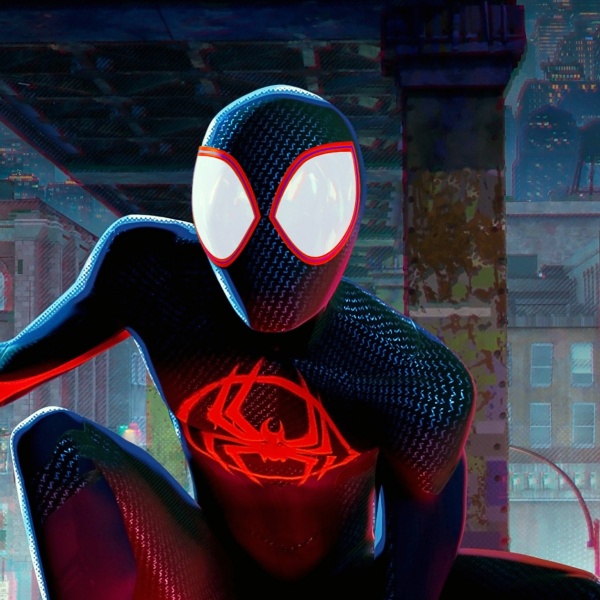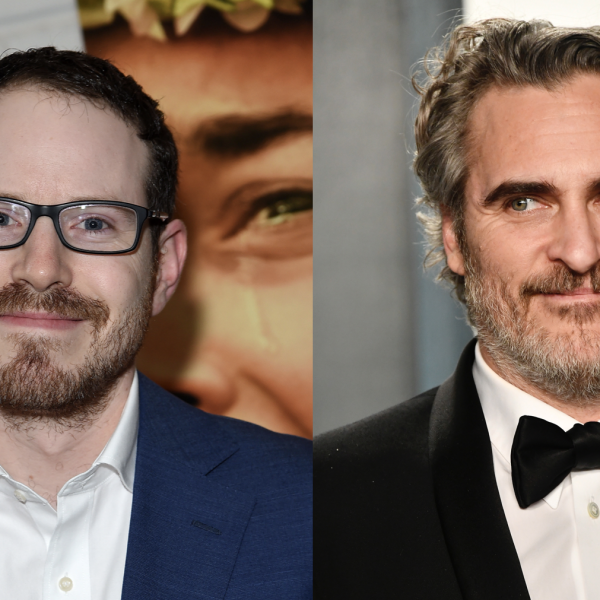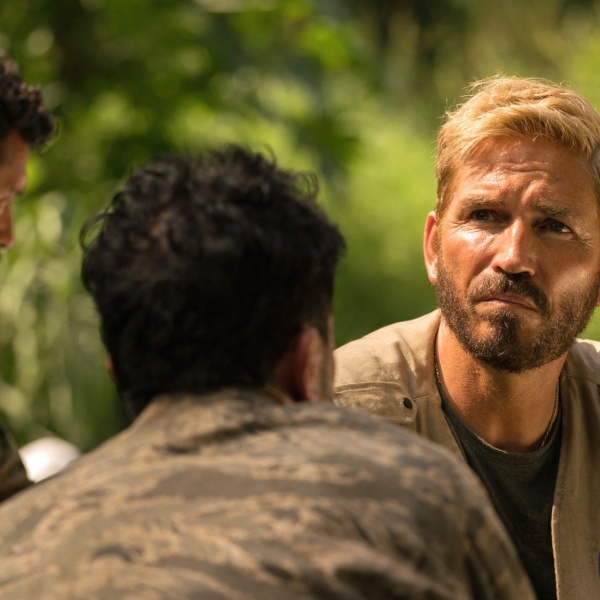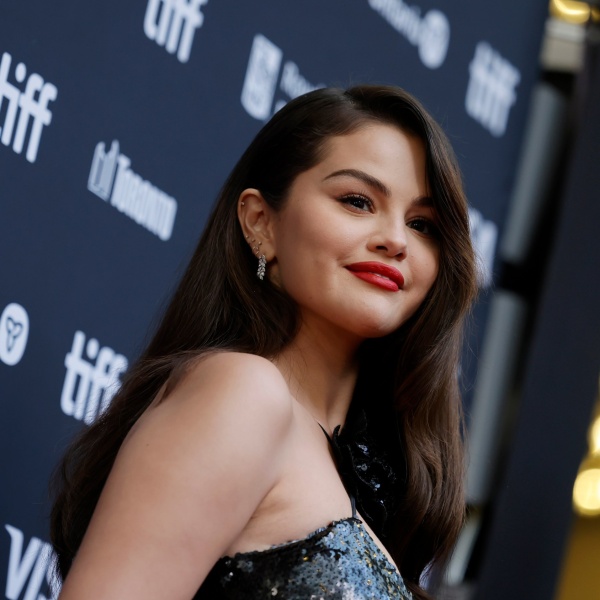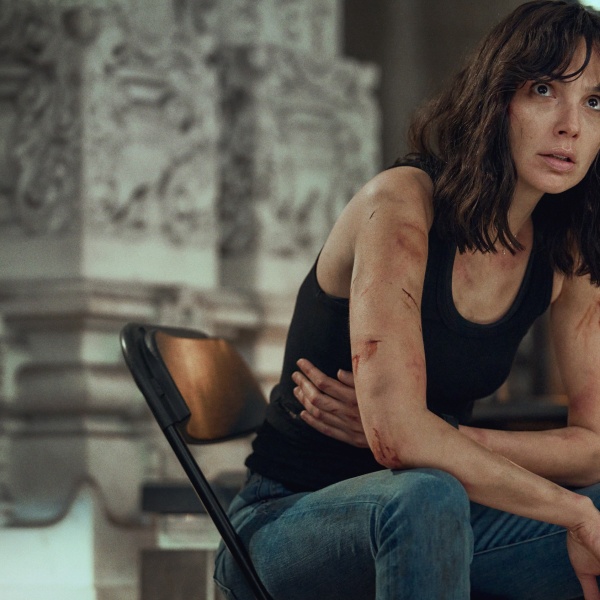This article contains IndieWire’s preliminary Best Cinematography predictions for the 2024 Oscars. We regularly update our predictions throughout awards season and republish previous versions (like this one) for readers to track changes in how the Oscar race has changed. For the latest update on the frontrunners for the 96th Academy Awards, see our 2024 Oscars predictions hub.
The State of the Race
It’s shaping up to be a large-format face-off between “Oppenheimer” (Universal) and “Dune: Part Two” (Warner Bros.), with Oscar-nominated Hoyte van Hoytema (“Dunkirk”) going up against Oscar winner Greig Fraser (“Dune”). The other early frontrunners include Rodrigo Prieto for “Killers of the Flower Moon” (Apple TV+/Paramount) — he’s also contending for “Barbie” (Warner Bros.) — Robert Yeoman for “Asteroid City” (Focus Features), and Shabier Kirchner for “Past Lives” (A24).
Others in contention include Matthiew Libatique for “Maestro” (Netflix), Robbie Ryan for “Poor Things” (Searchlight), Dariusz Wolski for “Napoleon” (Apple TV+/Sony Pictures), Łukasz Żal for “The Zone of Interest” (A24), Pawel Pogorzelski for “Beau Is Afraid” (A24), Erik Messerschmidt for “The Killer” (Netflix), Ed Lachman for “El Conde” (Netflix), Christopher Blauvelt for “May December” (Netflix), Linus Sandgren for “Saltburn” (Amazon/MGM), Fraser and Oren Soffer for “The Creator” (20th Century), Dan Laustsen for “The Color Purple” (Warner Bros.), and Philippe Le Sourd for “Priscilla” (A24).
“Oppenheimer” represents the culmination of van Hoytema’s IMAX collaboration with Christopher Nolan. The duo achieves a new kind of intimate spectacle with this psychological thriller about physicist J. Robert Oppenheimer (Cillian Murphy), the “father of the atomic bomb.” The cinematographer uses the large-format IMAX camera to explore the landscape of faces; namely, Oppenheimer’s in color from his perspective and antagonist Admiral Lewis Strauss’ (Robert Downey Jr.) in black-and-white from his. A shout out to Kodak for engineering 65mm monochromatic film for IMAX. As a result, van Hoytema redefines portraits and close-ups for 70mm IMAX presentation. In addition, the cinematographer helped with the IMAX shooting of DNEG’s in-camera VFX to visualize the atomic bomb explosion and Oppenheimer’s quantum physics theories. For all of these reasons, van Hoytema is the early favorite to win the Oscar.
Denis Villeneuve pushes the sensory spectacle of “Dune” even further in “Part Two,” providing Fraser greater visual opportunities with the digital Alexa LF and Mini LF to explore Paul (Timothée Chalamet) leading the nomadic Fremen into their holy war, thanks to his power of prescience. Whereas “Dune” only had select sequences formatted for IMAX, the entire sequel will be IMAX-compliant. Plus, the trailer reveals greater stylization with fiery reds and black-and-white sequences involving Austin Butler as the bald, sword-wielding baddie, Feyd-Rautha during gladiator fights on Giedi Prime.
“Killers of the Flower Moon,” Martin Scorsese’s tragic historical crime drama, brings out the best in Prieto. It’s about the serial murders of the Osage Indians after oil is discovered under the Osage Nation land in 1920s Oklahoma. Shooting in 35mm, the three-time nominee (“The Irishman,” “Silence,” “Brokeback Mountain”) captures the beauty of the Indigenous culture and spirit (personified by Lily Gladstone’s Mollie Burkhart) with appropriate naturalistic colors and lighting. By contrast, the corrupt, evil world of Robert De Niro’s wealthy rancher is shot with a darker, moodier look.

For Wes Anderson’s “Asteroid City,” about the meaning of existence and creativity, the Oscar-nominated Yeoman (“The Grand Budapest Hotel”) shot two distinct styles in 35mm: the desert town of 1955 in widescreen has a pastel look with natural light and soft diffusion, while the TV broadcast of its Elia Kazan-like theatrical origin and backstory is depicted in black-and-white and Academy ratio. It’s the perfect summation of what the director and his go-to cinematographer have achieved together.
Celine Song’s “Past Lives,” the sublime romance about childhood friends Nora (Greta Lee) and Hae Sung (Teo Yoo) who are briefly reunited online before reconciling in person after two decades, achieves a wonderful visual intimacy by Kirchner, who shot on 35mm. Nora and Hae Sung are never in the right place at the right time to achieve their destiny (in-yun), so there’s always tension. However, Nora and her husband, Arthur (John Magaro), experience in-yun and become soul mates. The brilliant opening scene in the bar poses the question: Who are they? And a masterful final long take when Nora and Hae Sung say goodbye provides the answer.
Bradley Cooper and Libatique follow up the actor’s directorial debut of “A Star Is Born” with “Maestro,” which explores legendary conductor/composer Leonard Bernstein’s (Cooper) complicated love story with actress wife Felicia Montealegre (Carey Mulligan), spanning more than 30 years. The director and cinematographer established a visual language on “A Star Is Born” about music and performance and getting swept up in a whirlwind romance. For this, they shot on 35mm in both color (and 1.85:1) for the later years and in black-and-white (and 1.33:1) for the early period. It will be interesting to observe how they’ve redefined their language to accommodate the visual look and camera movement.
Yargos Lanthimos and Ryan reunite for “Poor Things” following “The Favourite” (for which Ryan was Oscar-nominated): a twisted Victorian “Frankenstein” gender-bender and romance. It stars Emma Stone resurrected from the dead by her creator (Willem Dafoe) with the brain of her unborn child. This is another 35mm film shot in color (including Ektachrome) and black-and-white for contrasting perspectives. It also looks like another tour de force from Ryan that makes use of fish-eye lens distortion and bizarre camera moves.
“Napoleon” is about transformational change — a timely theme that Ridley Scott and his Oscar-nominated cinematographer Wolski (“News of the World”) explore in the historical epic about the rapid rise to power of Napoleon Bonaparte (Joaquin Phoenix) from military leader to Emperor. But it’s his obsessive love story with Joséphine (Vanessa Kirby) where the visual style departs from the prevailing naturalism to a more fiery look.

Jonathan Glazer’s “The Zone of Interest,” his disturbing Holocaust drama about the domestic family bliss within eyeshot of the Auschwitz camp, is shot with chilly precision by two-time Oscar nominee Żal (the black-and-white “Ida” and “Cold War”). He’s aided by the director’s innovative 360-degree sets, which had multiple cameras installed that were removed in post, providing “the unsettling quality of surveillance.” The most devastating shot, though, is the long view from the family’s garden path of the barb-wired wall and camp’s chimney beyond against a blue sky, no less.
Ari Aster’s “Beau Is Afraid,” in which Phoenix’s paranoid man-child goes on a surreal odyssey, required Pogorzelski to implement a very specific visual design. This revolved around Beau being an insulated character and Aster’s preference for wide lenses and saturated colors. They shot with the Sony Venice and Rialto Extension System developed for “Top Gun: Maverick.” The other important factor was creating anxiety by shaking the camera.
In Greta Gerwig’s blockbuster “Barbie,” which is about transformational change for Margot Robbie’s eponymous Mattel doll, Prieto creates a visual dichotomy between the surreal innocence of Barbie Land and the real world of L.A.’s Century City. He’s at his best creating simple, complementary lighting to play off the director’s “TechnoBarbie” pink palette to go along with the cartoon-like lateral camera movement for Barbie.
As for the rest: David Fincher’s passion project “The Killer” (Netflix), based on the graphic novel by Alex Nolent, finds Michael Fassbender’s assassin questioning his nihilistic worldview after developing a conscience. Look for Oscar winner Messerschmidt (“Mank”) to embrace a chilly noir look for the Parisian locale. Pablo Larraín’s “El Conde” envisions Chilean dictator Augusto Pinochet (Jaime Vadell) as a vampire seeking death in a black comedy described as “Nosferatu” meets “Succession.” Two-time Oscar nominee Lachman (“Carol,” “Far From Heaven”) uses the new Alexa Mini LF Monochrome camera for an appropriately Expressionistic black-and-white look. Todd Haynes delivers his own black comedy of self-delusion in “May December” (Netflix), in which Natalie Portman’s actress visits Julianne Moore’s notorious former school teacher in Maine to study her for a film about her tabloid sex scandal 20 years earlier. Blauvelt (who replaced Lachman after breaking his hip on “El Conde”) aims for high camp without the extreme stylization that Haynes is known for.

In addition, “Saltburn,” Emerald Fennell’s wicked satire of wealth and privilege at the dawn of the 21st century, shot in 35mm by Oscar-winning Sandgren (“La La Land”), hurls Oxford student Barry Keoghan into the sprawling estate of aristocrat Jacob Elordi and his eccentric family for a frolicking summer. Gareth Edwards’ sci-fi actioner, “The Creator,” about a futuristic war between humanity and AI, features the innovative use of the Sony FX3 lightweight, prosumer camera to shoot on the go in Thailand with multiple configurations. This allowed freedom, intimacy, and epic compositions (with 2.76:1 and IMAX aspect ratios). Blitz Bazawule’s “The Color Purple,” adapted from the Broadway stage musical and starring Fantasia Barrino as Alice Walker’s celebrated Celie and her life-long struggles during the early 20th century South, gets the magical realism treatment from Oscar-nominated Laustsen (“Nightmare Alley,” “The Shape of Water”). Sofia Coppola’s “Priscilla,” an adaptation of Priscilla Presley’s memoir, provides a counter perspective to Baz Luhrmann’s “Elvis” with the love story between Cailee Spaeny’s teenage Priscilla and Jacob Elordi as Elvis. Coppola suggests that her 20th-century princess saga is influenced by “Marie Antoinette,” which bodes well for Americana stylization from Le Sourd.
Potential nominees are listed in alphabetical order; no film will be deemed a frontrunner until we have seen it.
Frontrunners
Hoyte van Hoytema (“Oppenheimer”)
Shabier Kirchner (“Past Lives”)
Rodrigo Prieto (“Killers of the Flower Moon”)
Robert Yeoman (“Asteroid City”)
Łukasz Żal (“The Zone of Interest”)
Contenders
Christopher Blauvelt (“May December”)
Greig Fraser (“Dune: Part Two,” “The Creator,” with Oren Soffer)
Ed Lachman (“El Conde”)
Dan Laustsen (“The Color Purple”)
Philippe Le Sourd (“Priscilla”)
Matthiew Libatique (“Maestro”)
Erik Messerschmidt (“The Killer”)
Pawel Pogorzelski (“Beau Is Afraid”)
Rodrigo Prieto (“Barbie”)
Robbie Ryan (“Poor Things”)
Linus Sandgren (“Saltburn”)
Dariusz Wolski (“Napoleon”)


